Prediction and Analysis of Chlorophyll-a Concentration in the Western Waters of Hong Kong Based on BP Neural Network
Abstract
:1. Introduction
2. Data and Methods
2.1. Study Area and Data Sources
2.2. Pre-Processing of Remote Sensing Images
2.2.1. Radiometric Calibration
2.2.2. Atmospheric Correction
2.2.3. Orthorectification without Ground Control Points
2.3. Normality Test of Reflectance Data
2.4. Pearson Correlation Analysis
2.5. BP Neural Network Model Construction
3. Results and Analysis
3.1. Determination of the Number of Hidden Layer Neurons
3.2. Analysis of Input Factor Connection Weights
3.3. Model Accuracy Verification and Evaluation
3.4. Spatiotemporal Analysis of Chl-a Concentration in the Study Area
4. Discussion
4.1. Normality Test
4.2. BP Neural Network Model
5. Conclusions
Author Contributions
Funding
Institutional Review Board Statement
Informed Consent Statement
Data Availability Statement
Acknowledgments
Conflicts of Interest
References
- Fan, Z.; Wang, Z.; Huang, P.; Dong, Y.; Gao, Z. Inversion analysis of chlorophyll-a concentration in lakes based on hyperspectral imagery. Ecol. Sci. 2023, 42, 121–128. [Google Scholar]
- Yao, J.; Yang, L.; Shu, Y.; Zhang, L.; Shi, R. Comparison of summer chlorophyll a concentration in the South China Sea and the arabian Sea using remote sensing data. Acta Oceanol. Sin. 2017, 36, 61–67. [Google Scholar] [CrossRef]
- Carpenter, D.J.; Carpenter, S.M. Modeling inland water quality using Landsat data. Remote Sens. Environ. 1983, 13, 345–352. [Google Scholar] [CrossRef]
- Moses, W.J.; Gitelson, A.A.; Berdnikov, S.; Povazhnyi, V.; Povazhnyy, V. Estimation of chlorophyll—A concentration in case 11 waters using MODIS and MERIS data-successes and challenges. Environ. Res. Lett. 2009, 4, 993–1004. [Google Scholar] [CrossRef] [Green Version]
- Li, Y.; Huang, J.; Wei, Y.; Lu, W. Inversion of chlorophyll concentration in water bodies by analytical modeling method. J. Remote Sens. 2006, 2, 169–175. [Google Scholar]
- Wang, X.; Zhang, C. Water quality prediction of San Francisco Bay based on deep learning. J. Jilin Univ. (Earth Sci. Ed.) 2021, 51, 222–230. [Google Scholar]
- Zhao, Q.; Zhao, S.; Liu, K.; Wang, Y.; Li, H. Remote sensing inversion of COD in Baiyangdian based on measured spectra and Landsat 8 imagery. Mod. Electron. Tech. 2019, 42, 56–60. [Google Scholar]
- Sun, H.; He, H.; Fu, B.; Wang, S.; Ma, R.; Wu, M. Quantitative inversion and spatio-temporal analysis of chlorophyll-a in the offshore waters of Hong Kong. China Environ. Sci. 2020, 40, 2222–2229. [Google Scholar]
- Chen, X.; Li, Y.; Li, Z. Spatiotemporal distribution of chlorophyll-a concentration in the waters of Hong Kong. Acta Geogr. Sin. 2002, 57, 422–428. [Google Scholar]
- Xi, H.; Zhang, Z.; Qiu, Z.; He, Y.; Qiu, Z. Retrieval of chlorophyll-a concentration in the adjacent waters of Hong Kong based on semi-analytical algorithm. J. Lake Sci. 2009, 21, 199–206. [Google Scholar]
- Feng, T.; Pang, Z.; Jiang, W. Retrieval of chlorophyll-a concentration in Lake Chaohu based on the Zhuhai-1 hyperspectral satellite. Spectrosc. Spectr. Anal. 2022, 42, 2642–2648. [Google Scholar]
- Yang, M.; Hu, Y.; Tian, H. Atmospheric Correction of Airborne Hyperspectral CASI Data Using Polymer, 6S and FLAASH. Remote Sens. 2021, 13, 5062. [Google Scholar] [CrossRef]
- Li, J.; Fu, Q. Analysis of the Influence of DEM on Orthorectification of High-Resolution Satellite Images. Geospat. Inf. 2021, 19, 50–52+60+7. [Google Scholar]
- Drezner, Z.; Zerom, O.T.D. A Modified Kolmogorov-Smirnov Test for Normality. MPRA Pap. 2010, 39, 693–704. [Google Scholar] [CrossRef] [Green Version]
- Lilliefors, H. On the Kolmogorov-Smirnov Test for Normality with Mean and Variance Unknown. Publ. Am. Stat. Assoc. 1967, 62, 399–402. [Google Scholar] [CrossRef]
- Gong, S.; Huang, J.; Li, Y.; Li, G. Dynamic study of chlorophyll-a content in Lake Taihu based on time series analysis method. Oceanol. Limnol. Sin. 2008, 39, 591–598. [Google Scholar]
- Rumelhart, D.E.; Hinton, G.E.; Williams, R.J. Learning representations by back-propagating errors. Nature 1986, 323, 533–536. [Google Scholar] [CrossRef]
- Yue, J.; Pang, B.; Zhang, Y.; Liu, J. Water Quality Inversion of Wide and Shallow Lakes Based on Neural Networks. South–North Water Transf. Water Sci. Technol. 2016, 14, 26–31. [Google Scholar]
- Sun, W.; Sun, J.; Ren, X.; Wang, Q.; Li, L. Drinking water quality prediction of Yulong Lake based on BP neural network. Urban Water Supply 2021, 2, 69–74+109. [Google Scholar]
- Deng, D.; Chen, J.; Pei, L.; Zhou, M.; Sun, Y. Prediction method of deep-seated anti-slip stability safety factor of gravity dam based on deep belief network. J. Water Resour. Plan. Des. 2020, 36, 140–145. [Google Scholar]
- Yang, Y.; Chen, G. Neural network prediction method in spectral oil analysis monitoring technology. Spectrosc. Spectr. Anal. 2005, 25, 1339–1343. [Google Scholar]
- Garson, D.G. Interpreting neural network connection weights. AI Expert 1991, 6, 47–51. [Google Scholar]
- Garson, D.G. A Comparison of Neural Network and Expert Systems Algorithms with Common Multivariate Procedures for Analysis of Social Science Data. Soc. Sci. Comput. Rev. 1991, 9, 399–434. [Google Scholar] [CrossRef]

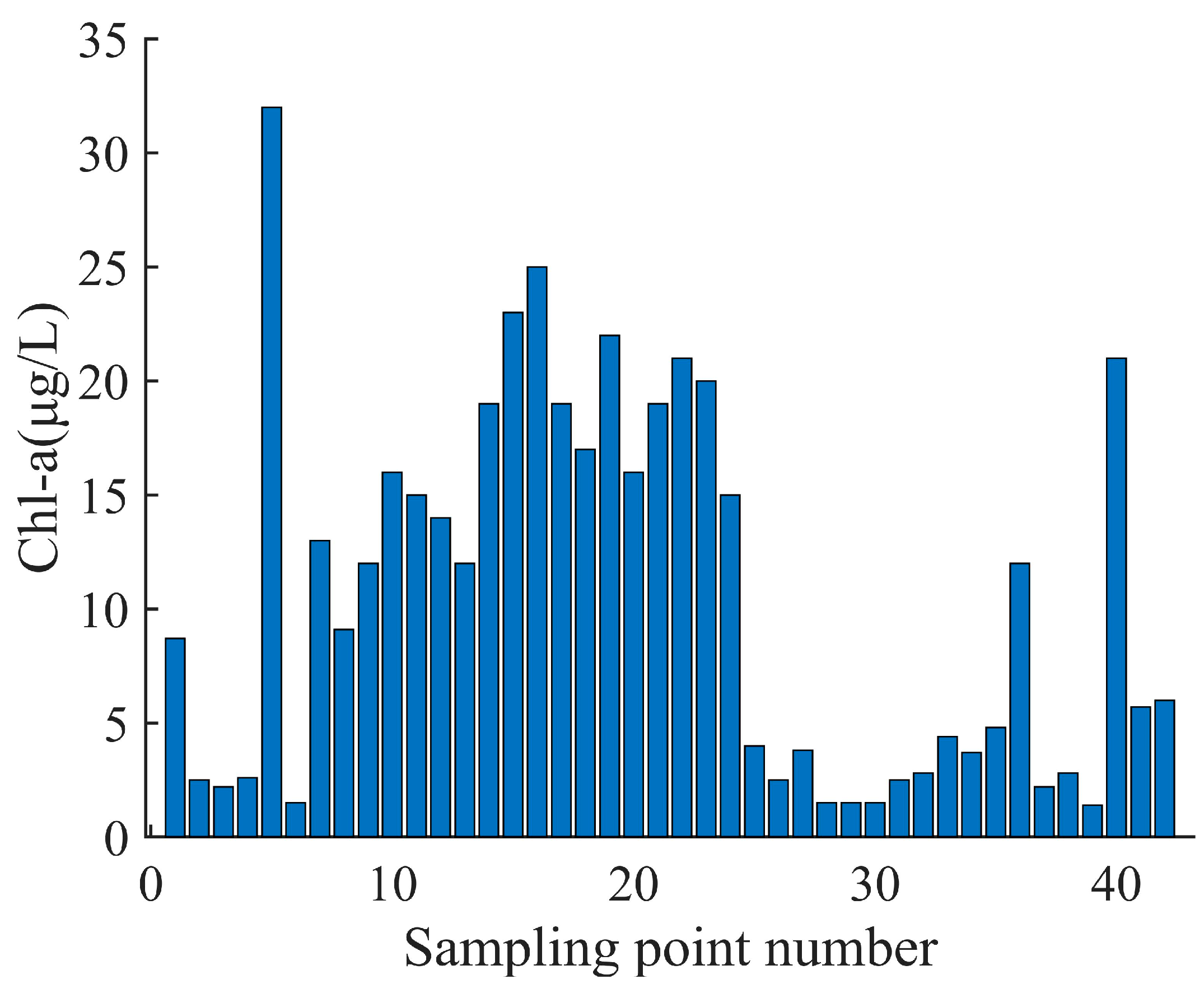


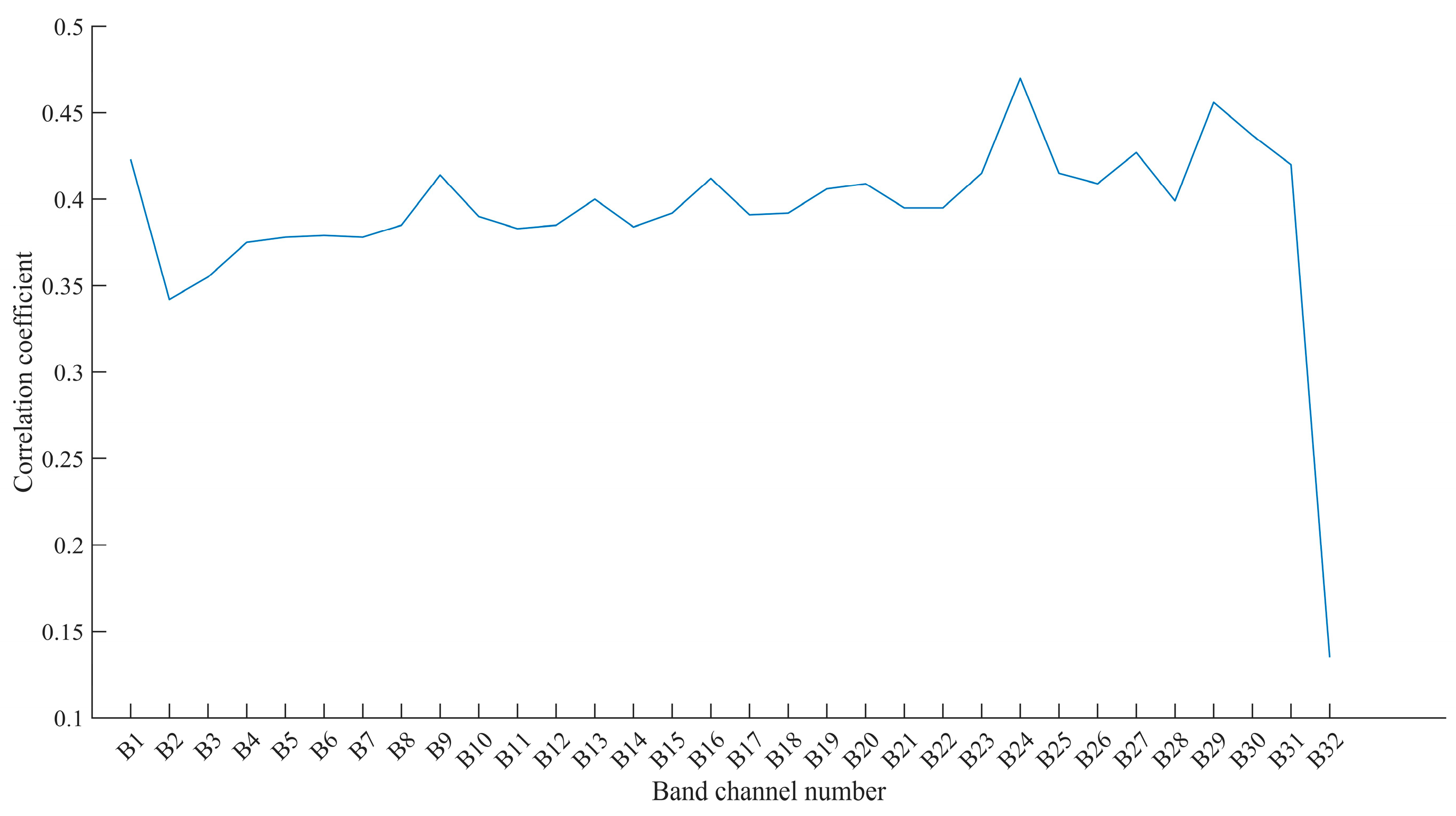
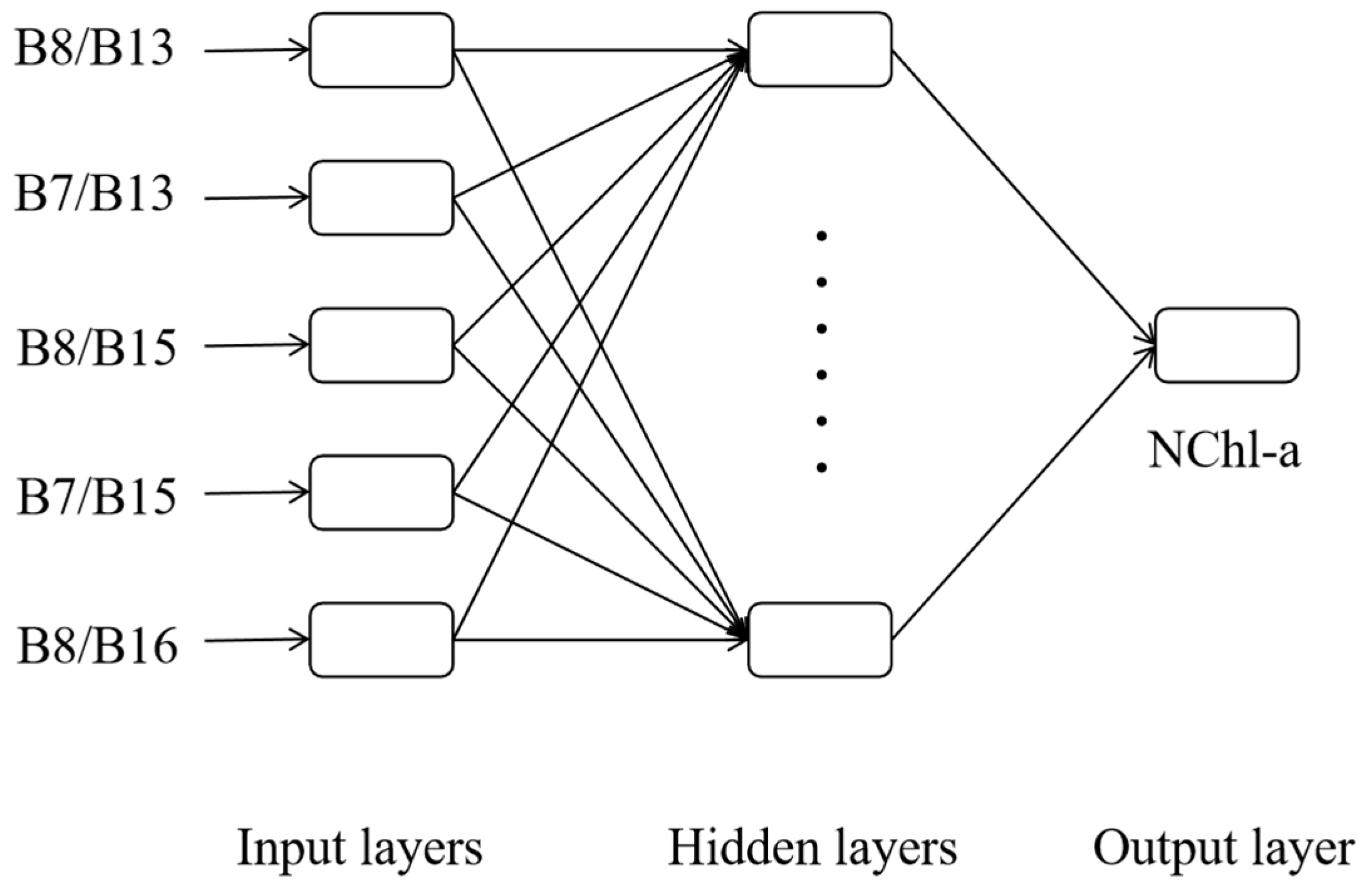
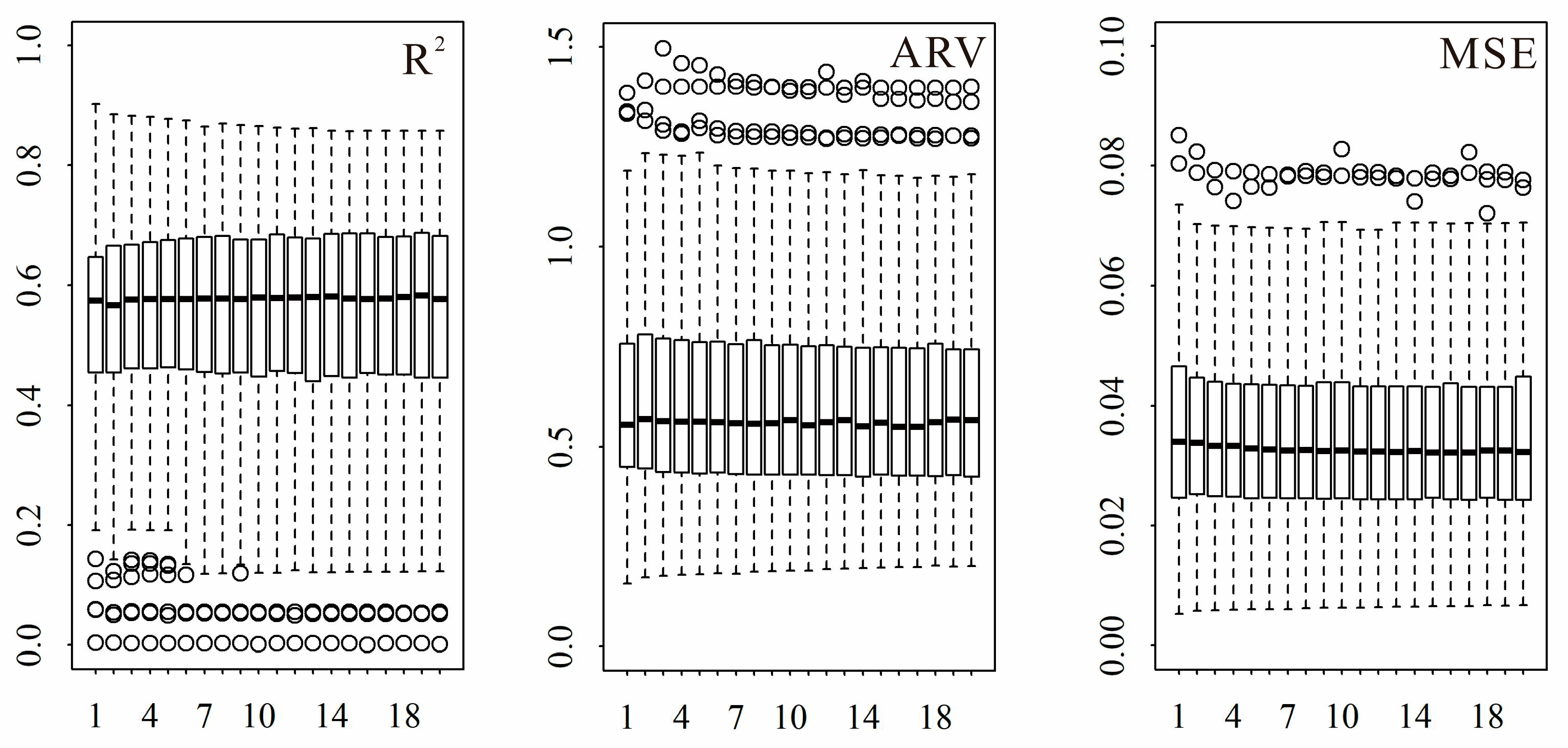


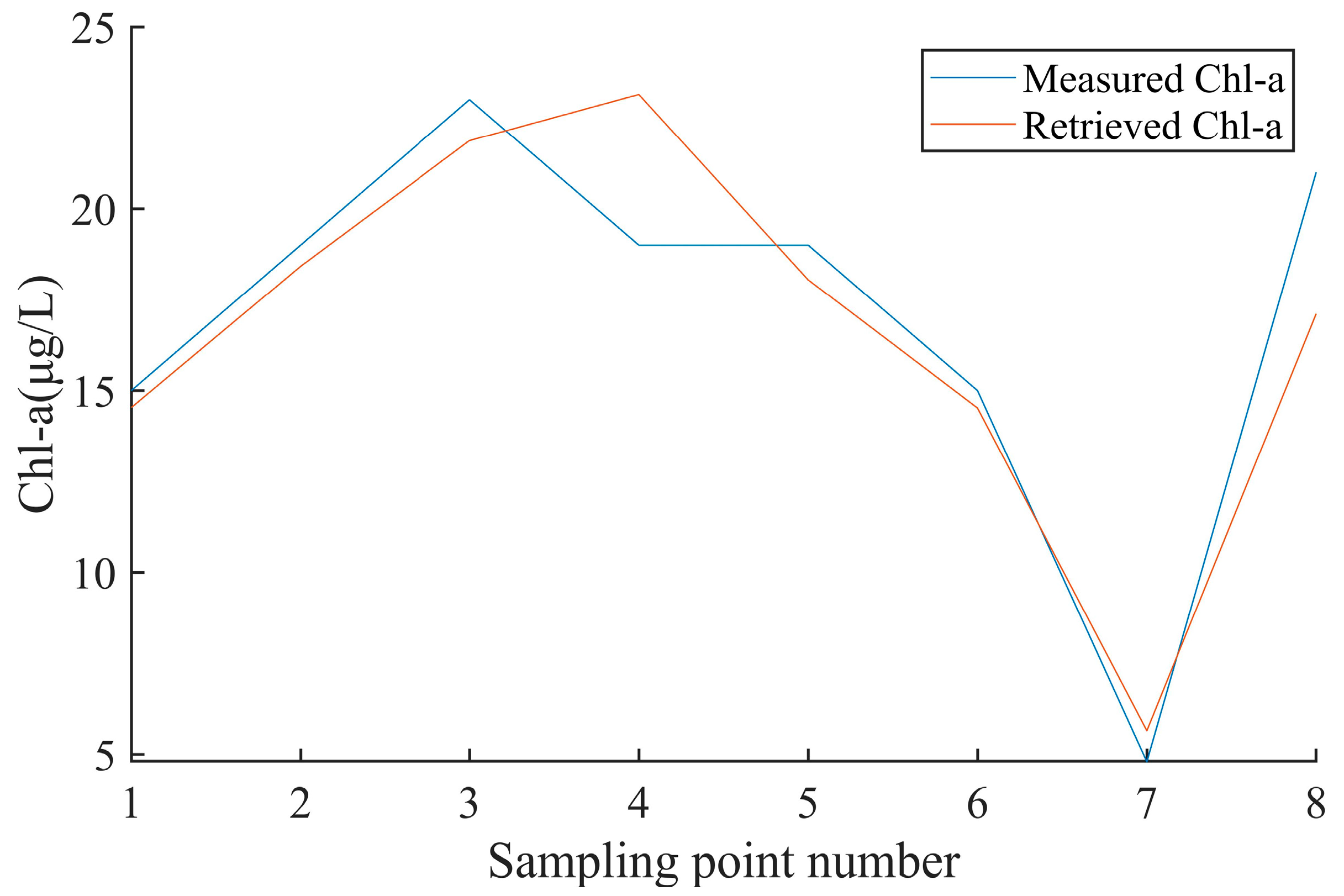
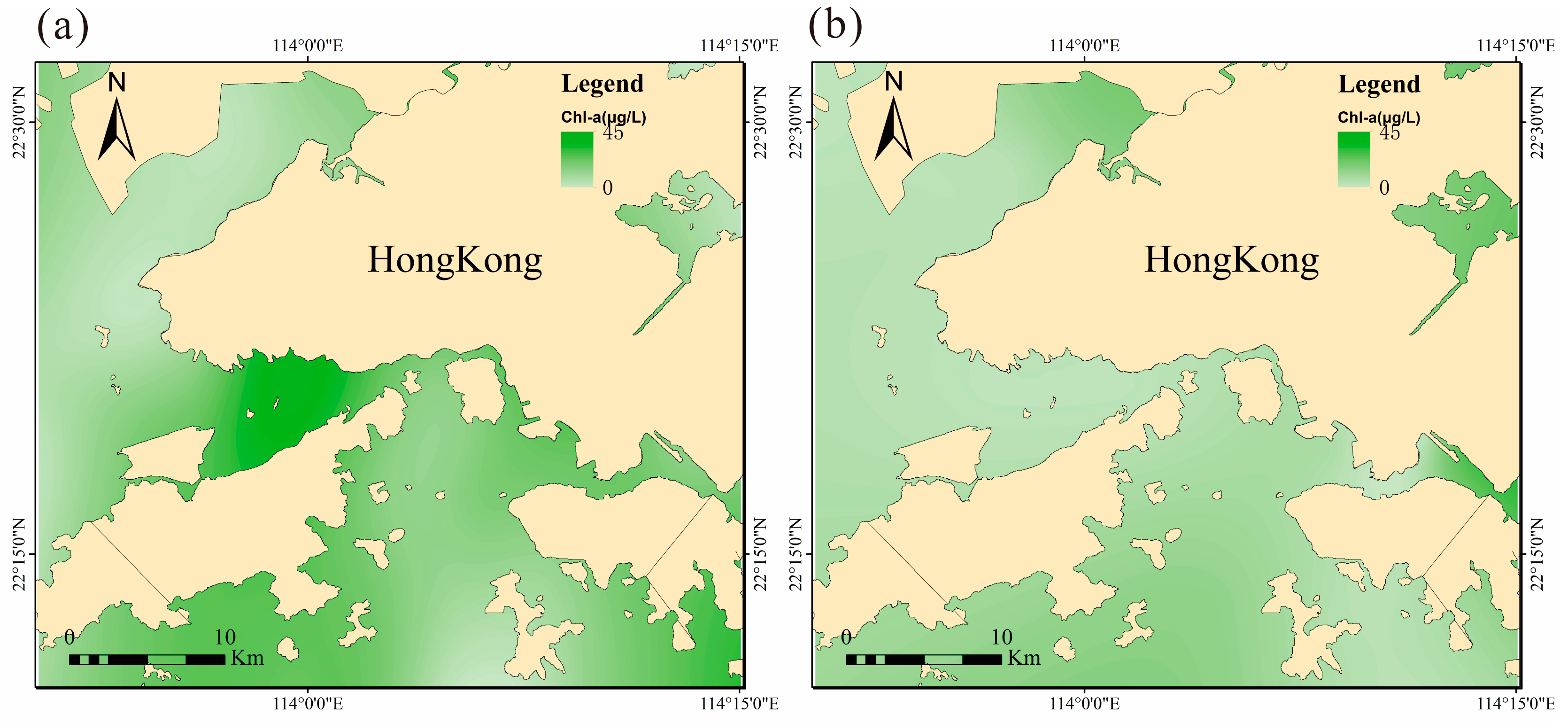
| Parameters | Number |
|---|---|
| Spectral range | 400–1000 nm |
| Spectral resolution | 2.5 nm |
| Spatial resolution | 10 m |
| Number of image channels | 32 |
| Orbit altitude | 500 km |
| Imaging range | 1500 km × 2500 km |
| Channel Number | Wavelength (nm) | Channel Number | Wavelength (nm) | Channel Number | Wavelength (nm) | Channel Number | Wavelength (nm) |
|---|---|---|---|---|---|---|---|
| B1 | 443 | B9 | 580 | B17 | 709 | B25 | 833 |
| B2 | 466 | B10 | 596 | B18 | 730 | B26 | 850 |
| B3 | 490 | B11 | 620 | B19 | 746 | B27 | 865 |
| B4 | 500 | B12 | 640 | B20 | 760 | B28 | 880 |
| B5 | 510 | B13 | 665 | B21 | 776 | B29 | 896 |
| B6 | 531 | B14 | 670 | B22 | 780 | B30 | 910 |
| B7 | 550 | B15 | 686 | B23 | 806 | B31 | 926 |
| B8 | 560 | B16 | 700 | B24 | 820 | B32 | 940 |
| Name | Sample Size | Mean | Standard Deviation | Skewness | Kurtosis | Shapiro–Wilk Test Statistic W Value | p |
|---|---|---|---|---|---|---|---|
| B1 | 42 | 845.238 | 651.680 | 0.384 | −1.244 | 0.880 | 0.000 |
| B2 | 42 | 983.810 | 614.002 | 0.108 | −1.594 | 0.864 | 0.000 |
| B3 | 42 | 1058.548 | 588.879 | 0.263 | −1.281 | 0.876 | 0.000 |
| B4 | 42 | 1048.333 | 643.326 | 0.368 | −1.151 | 0.872 | 0.000 |
| B5 | 42 | 1106.976 | 624.713 | 0.473 | −0.916 | 0.881 | 0.000 |
| B6 | 42 | 1159.643 | 664.016 | 0.430 | −1.077 | 0.863 | 0.000 |
| B7 | 42 | 1136.357 | 616.813 | 0.500 | −0.960 | 0.876 | 0.000 |
| B8 | 42 | 1143.952 | 607.887 | 0.519 | −0.914 | 0.880 | 0.000 |
| B9 | 42 | 1108.929 | 610.264 | 0.424 | −1.084 | 0.879 | 0.000 |
| B10 | 42 | 1035.262 | 611.779 | 0.417 | −0.979 | 0.901 | 0.002 |
| B11 | 42 | 1020.262 | 619.634 | 0.235 | −1.356 | 0.882 | 0.000 |
| B12 | 42 | 940.167 | 587.454 | 0.282 | −1.226 | 0.895 | 0.001 |
| B13 | 42 | 900.619 | 530.877 | 0.086 | −1.532 | 0.872 | 0.000 |
| B14 | 42 | 884.857 | 489.228 | 0.138 | −1.341 | 0.894 | 0.001 |
| B15 | 42 | 863.810 | 468.062 | 0.031 | −1.587 | 0.871 | 0.000 |
| B16 | 42 | 901.548 | 513.254 | 0.001 | −1.684 | 0.856 | 0.000 |
| B17 | 42 | 941.310 | 499.818 | −0.073 | −1.698 | 0.850 | 0.000 |
| B18 | 42 | 1000.167 | 649.385 | −0.198 | −1.913 | 0.785 | 0.000 |
| B19 | 42 | 846.452 | 525.086 | 0.136 | −1.527 | 0.888 | 0.001 |
| B20 | 42 | 876.381 | 539.786 | 0.229 | −1.284 | 0.922 | 0.007 |
| B21 | 42 | 896.643 | 541.395 | 0.047 | −1.623 | 0.876 | 0.000 |
| B22 | 42 | 933.714 | 569.613 | 0.070 | −1.604 | 0.882 | 0.000 |
| B23 | 42 | 1000.690 | 571.033 | −0.002 | −1.621 | 0.882 | 0.000 |
| B24 | 42 | 1060.952 | 608.497 | −0.082 | −1.788 | 0.843 | 0.000 |
| B25 | 42 | 1207.952 | 694.472 | −0.214 | −1.970 | 0.747 | 0.000 |
| B26 | 42 | 1196.690 | 667.880 | −0.238 | −1.958 | 0.740 | 0.000 |
| B27 | 42 | 1239.571 | 656.861 | −0.250 | −1.941 | 0.742 | 0.000 |
| B28 | 42 | 1458.833 | 732.599 | −0.257 | −1.926 | 0.749 | 0.000 |
| B29 | 42 | 1617.548 | 779.243 | −0.197 | −1.933 | 0.775 | 0.000 |
| B30 | 42 | 1766.619 | 839.419 | −0.086 | −1.776 | 0.839 | 0.000 |
| B31 | 42 | 1866.286 | 858.027 | −0.009 | −1.640 | 0.879 | 0.000 |
| B32 | 42 | 2908.024 | 1294.357 | 0.729 | 0.322 | 0.951 | 0.068 |
| B8/B13 | B7/B13 | B8/B15 | B7/B15 | B8/B16 |
|---|---|---|---|---|
| 1.24766098 | 1.442111959 | 1.265272427 | 1.481314433 | 1.462468193 |
| 1.256030702 | 1.358032009 | 1.256578947 | 1.364285714 | 1.358624778 |
| 1.287246722 | 1.396250808 | 1.296781883 | 1.444887118 | 1.406593407 |
| 1.413385827 | 1.393272962 | 1.346456693 | 1.512159175 | 1.327296248 |
| 1.067746686 | 1.011157601 | 1.122974963 | 1.193270736 | 1.063458856 |
| 1.393134715 | 1.363117871 | 1.364637306 | 1.410307898 | 1.335234474 |
| 1.332112332 | 1.315250151 | 1.373015873 | 1.523712737 | 1.355635925 |
| 1.382597569 | 1.339739616 | 1.373640435 | 1.403267974 | 1.331060136 |
| 1.148760331 | 1.152570481 | 1.155371901 | 1.254937163 | 1.15920398 |
| 1.182758621 | 1.111831442 | 1.161206897 | 1.171304348 | 1.091572123 |
| 1.150961538 | 1.08032491 | 1.139423077 | 1.159491194 | 1.069494585 |
| 1.151823579 | 1.183958152 | 1.199321459 | 1.283121597 | 1.232781168 |
| 1.162672476 | 1.141126158 | 1.14379085 | 1.214340786 | 1.12259444 |
| 1.068457539 | 1.071242398 | 1.056325823 | 1.067425569 | 1.059079062 |
| 1.124132614 | 1.191176471 | 1.108712413 | 1.2417962 | 1.174836601 |
| 1.135433071 | 1.199667221 | 1.146456693 | 1.1375 | 1.211314476 |
| 1.108130763 | 1.024012393 | 1.148365465 | 1.164965986 | 1.061192874 |
| 1.02617801 | 1.129682997 | 1.036649215 | 1.091911765 | 1.141210375 |
| 1.4425 | 1.397094431 | 1.4275 | 1.266075388 | 1.382566586 |
| 1.491094148 | 1.468671679 | 1.582697201 | 1.382222222 | 1.558897243 |
| 1.750629723 | 1.786632391 | 1.672544081 | 1.588516746 | 1.706940874 |
| 1.902140673 | 2.046052632 | 1.862385321 | 1.891304348 | 2.003289474 |
| 1.857142857 | 1.63368984 | 1.832826748 | 1.838414634 | 1.612299465 |
| 1.867507886 | 1.81595092 | 1.958990536 | 1.84272997 | 1.904907975 |
| 1.198630137 | 1.209677419 | 1.308219178 | 1.234913793 | 1.320276498 |
| 1.076419214 | 1.117913832 | 1.203056769 | 1.249433107 | 1.249433107 |
| 1.654411765 | 1.642335766 | 1.672794118 | 1.666666667 | 1.660583942 |
| 1.26910299 | 1.201257862 | 1.445182724 | 1.306306306 | 1.367924528 |
| 1.762711864 | 1.787965616 | 1.84180791 | 1.77173913 | 1.868194842 |
| 1.695906433 | 1.779141104 | 1.666666667 | 1.592178771 | 1.748466258 |
| 1.655870445 | 1.649193548 | 1.599190283 | 1.573705179 | 1.592741935 |
| 1.923423423 | 1.66796875 | 1.918918919 | 1.516014235 | 1.6640625 |
| 1.98206278 | 1.655430712 | 2.085201794 | 1.631578947 | 1.741573034 |
| 1.792253521 | 1.647249191 | 1.971830986 | 1.806451613 | 1.812297735 |
| Measured Concentration (μg/L) | Predicted Concentration (μg/L) | Relative Error (%) | Root-Mean-Square Error (μg/L) | Mean Relative Error (%) |
|---|---|---|---|---|
| 15 | 14.53 | 3.10 | 2.12 | 9.66 |
| 19 | 18.41 | 3.06 | ||
| 23 | 21.87 | 4.90 | ||
| 19 | 23.14 | 21.80 | ||
| 19 | 18.04 | 5.02 | ||
| 15 | 14.52 | 3.19 | ||
| 4.8 | 5.64 | 17.70 | ||
| 21 | 17.10 | 18.52 |
| Analysis Method | Independent Variable | R2 | RMSE | MRE |
|---|---|---|---|---|
| Pearson | B24 | 0.31 | 6.66 | 90.62 |
| Spearman | B27 | 0.35 | 6.43 | 89.70 |
Disclaimer/Publisher’s Note: The statements, opinions and data contained in all publications are solely those of the individual author(s) and contributor(s) and not of MDPI and/or the editor(s). MDPI and/or the editor(s) disclaim responsibility for any injury to people or property resulting from any ideas, methods, instructions or products referred to in the content. |
© 2023 by the authors. Licensee MDPI, Basel, Switzerland. This article is an open access article distributed under the terms and conditions of the Creative Commons Attribution (CC BY) license (https://creativecommons.org/licenses/by/4.0/).
Share and Cite
Zhu, W.-D.; Kong, Y.-X.; He, N.-Y.; Qiu, Z.-G.; Lu, Z.-G. Prediction and Analysis of Chlorophyll-a Concentration in the Western Waters of Hong Kong Based on BP Neural Network. Sustainability 2023, 15, 10441. https://doi.org/10.3390/su151310441
Zhu W-D, Kong Y-X, He N-Y, Qiu Z-G, Lu Z-G. Prediction and Analysis of Chlorophyll-a Concentration in the Western Waters of Hong Kong Based on BP Neural Network. Sustainability. 2023; 15(13):10441. https://doi.org/10.3390/su151310441
Chicago/Turabian StyleZhu, Wei-Dong, Yu-Xiang Kong, Nai-Ying He, Zhen-Ge Qiu, and Zhi-Gang Lu. 2023. "Prediction and Analysis of Chlorophyll-a Concentration in the Western Waters of Hong Kong Based on BP Neural Network" Sustainability 15, no. 13: 10441. https://doi.org/10.3390/su151310441





